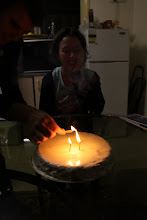
Sholette, Gregory. “Disciplining the Avant-Garde: the United States versus The Critical Art Ensemble”, CIRCA: Contemporary Visual Culture in Ireland 112, Summer 2005: 50 – 59
Gregory Sholette writes from the perspective of what I have earlier termed, a ‘slasher’ (see my blog, on Seth Price from earlier this year). He occupies the roles of artist, activist, writer and academic simultaneously and through the course of this article demonstrates the degree to which United States’ Homeland Security constructs all of these positions as ‘enemy’.
Yet, Sholette is the first to admit that the ways in which artists, writers and academics (and many others) have become artist/activists, writer/activists, academic/activists (etc) in the past are now ‘largely useless’ within the deterritorialised political environments of contemporary culture. Political power operates anonymously and therefore eludes confrontation (4). Sites or individuals that were once the targets of direct confrontation have traded in their bullseyes for camouflage, the activist who is also artist, academic or writer may well be armed, but has precious little to aim at.
Daniel Malone’s Steal this :-) at the in inaugural Singapore Biennale is an example of the way that seats of power are have become deterritorialised and anonymous. Malone restaged a well-known 1967 protest as a performative artwork and exercise in relational aesthetics. Steal this :-) hinged on the tension between the protest organised by Abbie Hoffman in its original context (at the pentagon in 1967) and that this protest had been reconfigured as an ‘artwork’ within the context of the biennale. The work acknowledged a slippage and confusion as to who or what exactly the protest in its restaging was being levelled at; the building that the crowd attempted to levitate was both the Singapore Town Hall and one of the exhibition sites (or was this site a stand in for the Pentagon?). Likewise the majority of participants in Steal this :-) were children visiting the exhibition on school trips, leaving a sort of reflexive openness about the political legitimacy of this artwork as protest (Malone).
Given local issues of conformity and freedom of speech in Singapore it is strangely perhaps the ‘fuzy’ (Sholette, 5) nature of this work that allowed it to take place at all. The work, by giving a sweetened, general idea of a protest, by adopting its own camouflage, is perhaps able to prod (albeit gently) at those local issues. That the work existed as an artwork and not as a protest whose success would have been measured on scale of real political outcome reflects back upon (and indeed protests against) the decay, and indeed failure, of the traditional protest format in contemporary western society.
Sholette, Gregory. “Disciplining the Avant-Garde: the United States versus The Critical Art Ensemble”, CIRCA: Contemporary Visual Culture in Ireland 112, Summer 2005: 50 – 59
Malone, Daniel. Artist’s Talk. Bachelor of Fine Arts (Third Year). Elam Lecture Theatre, Elam School of Fine Art, University of Auckland. April 2007.

1 comment:
I like the way that you have used Malone's 'gentle prodding' to point to both the anonymity of political power and the decay of traditional forms of protest in Western Culture, the first issue contributing to the second.
The succesful collective protest I have heard about recently(sucessful based upon the States innability to shut it down) is that of the Pirate Bay. But I suspect that the majority of their users, even though they pose a threat to established authority, have little investment in the politics of such an operation. The 'consumers' who use pirate bay are doing so for their own personal gain. A slightly depressing end to this comment. Though, as you know from going to the showing at Googley Eyes, there is much more to say on this topic.
Post a Comment